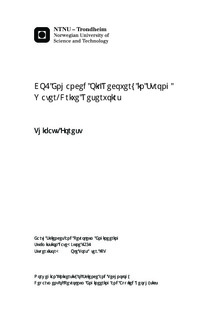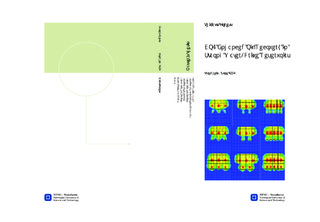| dc.contributor.advisor | Torsæter, Ole | nb_NO |
| dc.contributor.author | Forest, Thibaut | nb_NO |
| dc.date.accessioned | 2014-12-19T12:16:16Z | |
| dc.date.available | 2014-12-19T12:16:16Z | |
| dc.date.created | 2012-11-08 | nb_NO |
| dc.date.issued | 2012 | nb_NO |
| dc.identifier | 566019 | nb_NO |
| dc.identifier | ntnudaim:7617 | nb_NO |
| dc.identifier.uri | http://hdl.handle.net/11250/239759 | |
| dc.description.abstract | The growing demand for energy has prompted oil companies to increase the production while paying more and more attention to the CO_2 footprint of their activities. To fulfill these requirements CO_2 storage and enhanced recovery have been tremendously developed in the last few years. Despite this consideration for lowering carbon emissions, the political incentives and the economic faisability of the projects, certain CO_2 pilot projects turn to be a failure. This study deals with a subject that has not been deeply under research so far but caused some EOR projects to be reconsidered: CO_2 EOR in the particular case of strong water-drive reservoirs. Despite the lack of field data on actual or previous projects, a simple one-dimensional model and some two-dimensional models were analysed with Eclipse 100 and Eclipse 300. The first part lists the CO_2 properties which will be implemented in the simulation files and describes the benefits of this type of tertiary recovery technique using carbon dioxide. Basic flow equations are applicable in the one-dimensional case and enable to determine the oil, water and CO_2 rate in a strong aquifer configuration. Both the blak-oil and computational simulations lead to concluding results which validated the derived equations. Further simulations permited to make a sensitivity analysis on the pressure drop or the distance between the wells, leading to optimum well location depending on the production needs. A better understanding of the model gave birth to a scaling number for the one-dimensional simulation that was verified by the construction of Walsh Diagrams. This model was further extended from one to two producers to account for gas losses due to the aquifer. It turns out that two scaling numbers are then necessary to describe this flow and eventually scale it up to real dimensions. Multiple-well simulations illustrated the effect of the aquifer on the CO_2 plume in the oil zone; however this loss in sweep efficiency needed to be quantified. A Matlab program was built in order to analyse the simulation pictures. By measuring the pixels of the plume compared to a reference area, the areal and vertical sweep efficiency were computed and gave a better feeling of the effect of the aquifer strength on the EOR process. For the model studied, the volumetric sweep efficiency falls from 15% for a weak aquifer, to 2% for a strong aquifer. The major part of the gas is blown away at a certain water rate which leads to a significant decrease in oil production for the production well next to the CO_2 injector. The industry has faced this problem for many years and some technological solutions turned out to be succesfull, this study can provide useful insights before implanting those solutions, by indicating the ideal well location and the expected fluid rates. | nb_NO |
| dc.language | eng | nb_NO |
| dc.publisher | Institutt for petroleumsteknologi og anvendt geofysikk | nb_NO |
| dc.subject | ntnudaim:7617 | no_NO |
| dc.subject | MTGEOP Geofag og petroleumsteknologi | no_NO |
| dc.subject | Reservoarteknologi | no_NO |
| dc.title | CO2 Enhanced Oil Recovery in Strong Water-Drive Reservoirs | nb_NO |
| dc.type | Master thesis | nb_NO |
| dc.source.pagenumber | 88 | nb_NO |
| dc.contributor.department | Norges teknisk-naturvitenskapelige universitet, Fakultet for ingeniørvitenskap og teknologi, Institutt for petroleumsteknologi og anvendt geofysikk | nb_NO |

